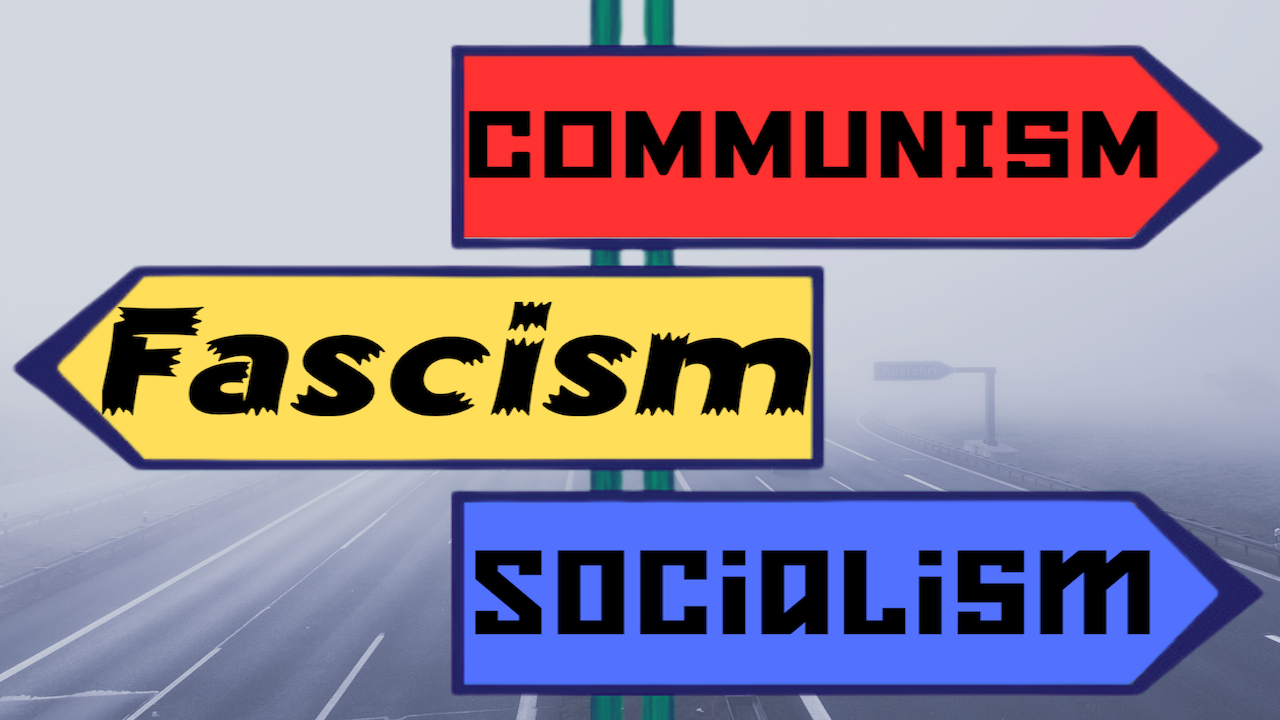Everything you wanted to know about Ideologies but we're afraid to ask.

Fascism, socialism, communism. These words are being thrown around quite a bit but not always correctly. Here's an easy to follow list along with the chart on the bottom.
What Is Fascism?
Fascism is a far-right, authoritarian political ideology that emphasizes:
- Totalitarian control – A strong central government with little to no political opposition.
- Nationalism – Often extreme, portraying the nation as superior and needing protection from outsiders.
- Militarism and Violence – Glorification of military power and the use of force to maintain order.
- Suppression of Dissent – Political opponents, the press, and free speech are crushed.
- Corporatism – The government works closely with big business while maintaining strict control over workers and unions.
- Scapegoating – Blaming internal or external groups (immigrants, minorities, political dissidents) for societal problems.
How Does It Work?
- Crisis & Fear – Fascists often rise in times of economic collapse, social unrest, or national humiliation. They exploit fear and promise order.
- Leader Cult – A single leader (or ruling party) is presented as the only solution to the country’s problems.
- Propaganda & Control – State-controlled media and censorship shape public opinion. Education is manipulated to reinforce ideology.
- Crushing Opposition – Political opponents are silenced through intimidation, imprisonment, or violence.
- War & Expansion – Many fascist states seek to expand, believing war is necessary for national strength.
What Is Socialism?
Socialism is a political and economic ideology that emphasizes:
- Collective or State Ownership – Key industries (healthcare, education, utilities) are publicly owned or heavily regulated.
- Economic Equality – Reducing wealth disparities through redistribution, social programs, or worker control.
- Social Welfare – Strong safety nets (healthcare, unemployment benefits, housing, etc.) to ensure basic needs are met.
- Democratic Control – Often supports democratic governance but with economic policies aimed at benefiting the majority.
- Class Struggle – The belief that economic systems should prioritize workers over wealthy elites and corporations.
How Does It Work?
- Critique of Capitalism – Socialism often arises in response to economic inequality, unemployment, or corporate exploitation.
- Government Intervention – The state plays a key role in regulating industries, taxing the wealthy, and funding social programs.
- Public Services Expansion – Universal healthcare, free or low-cost education, and worker protections are central policies.
- Worker Empowerment – Some forms push for worker-owned businesses, unions, and cooperative economic models.
- Varied Implementation – Socialism ranges from democratic socialism (as in Scandinavia) to authoritarian models (as in the Soviet Union).
What Is Communism?
Communism is a political and economic ideology that emphasizes:
- A Classless Society – The elimination of social classes, where wealth and resources are shared equally.
- Common Ownership – The means of production (factories, land, businesses) are collectively owned, with no private property.
- No Government or State – In theory, the state "withers away" as people self-govern, though in practice, communist states have strong central governments.
- Abolition of Capitalism – No private business or market competition; instead, goods and services are distributed according to need.
- Central Planning – The economy is planned by the government, determining production, prices, and wages.
How Does It Work?
- Revolution & Overthrow of Capitalism – Communist movements often begin with a working-class uprising against elites.
- Dictatorship of the Proletariat – A transitional state where the government controls all resources to enforce equality.
- State-Controlled Economy – Production and distribution are planned to ensure basic needs are met for all citizens.
- Elimination of Class & Private Ownership – Over time, wealth is redistributed, and private businesses disappear.
- Theoretical Stateless Society – Eventually, the state dissolves, and society operates collectively without hierarchy (though this has never been achieved in practice).
